
views
Buying Flaxseed
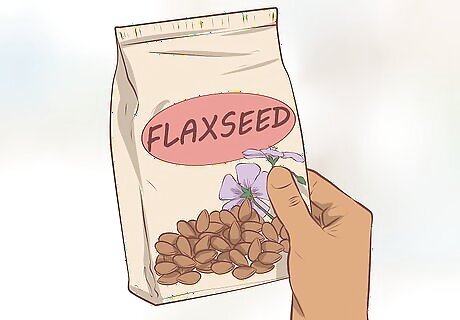
Know what to purchase. Flaxseed is a very small seed that is flat and oval shaped. The seeds are much smaller than sunflower seeds. It is found in more than one form and each has different properties. Flaxseed comes in red to golden varieties. The color of the seed doesn’t mean the nutritional content is different, but the seeds may have a slightly different flavor. You can try the different varieties and determine which one has the most pleasing flavor. Some natural food stores may let you sample them in store so you do not have to purchase several types.
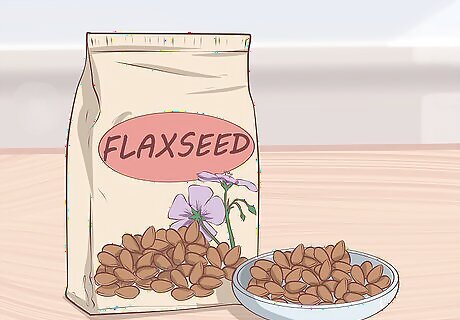
Buy whole flaxseed. Whole flaxseed is the unbroken tiny seeds. The benefits of whole flaxseed are that is has more fiber and a longer shelf life. It can also be used in more applications. The negative aspect to whole flaxseed is that the body may not fully digest the seed and the nutritional components may pass through the body unabsorbed. You can purchase whole flax seeds and grind them in your blender or coffee mill.
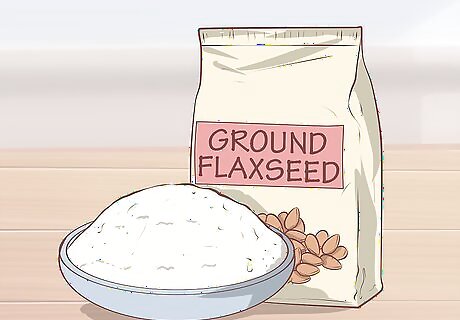
Buy ground flaxseed. Ground flaxseed, or flax meal, is the milled seeds. Ground flaxseed is slightly coarser than flour and has a nutty smell and flavor. Ground flaxseed can be purchased or it can be made at home. Ground flaxseed also allows for complete absorption of the nutritional components by the body. The drawback to purchasing ground flaxseed is the short shelf life. It doesn’t last for more than a few weeks once it has been opened and should be stored in a cool, dark place for best quality. Unless stored in special mylar packaging, ground flaxseed loses much of its nutritional potency, or active compounds, within 24 hours. If you wish to store it long-term, make sure you are keeping the flaxseed in a resealable mylar bag.
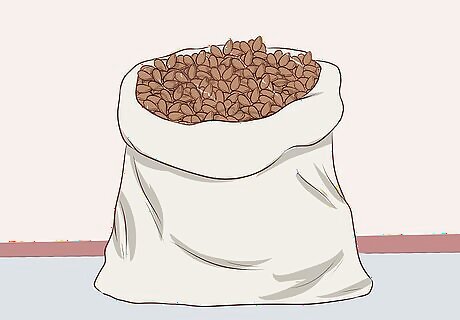
Purchase flaxseed in bulk, if available. Many natural food stores offer flaxseed in bulk. It is usually cheaper than the pre-packaged flaxseed and you can get as little or as much as you need. Flaxseed generally runs from US$8.00 to $12.00 per lb depending on where it is purchased.
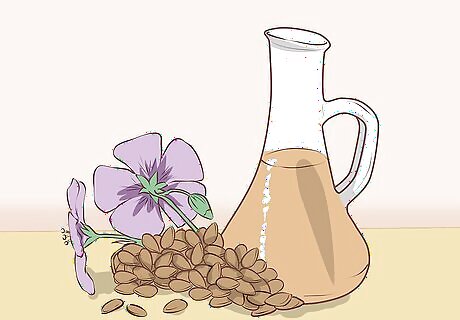
Buy flaxseed oil. Flaxseed oil is an easy way to get many of the health benefits of flaxseed. Keep it refrigerated to maintain freshness. Unlike the whole and ground seeds, flaxseed oil does not contain phytoestrogens. It does contain ALA fatty acids, however, which have health benefits.
Adding Flaxseed to Recipes
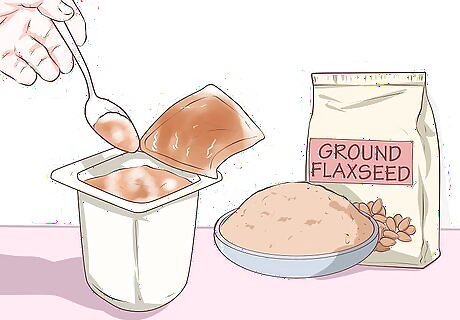
Add ground flaxseed to yogurt or smoothies. One tablespoon of ground flax will fulfill the daily omega-3 requirements and does not alter the flavor very much of the yogurt or smoothie. This will also add fiber to your yogurt or smoothie. The fiber in flaxseed has positive benefits for the elimination of waste from the body.
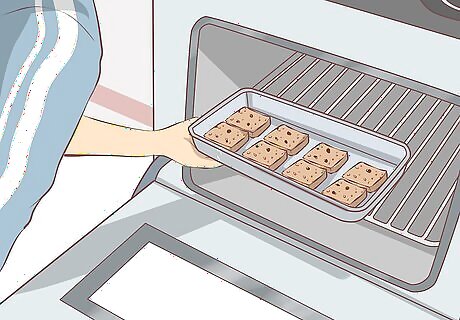
Bake with flaxseed. Flaxseed goes well in baked goods at small or larger amounts. It imparts a toasted nut flavor that matches well in sweet or savory baked goods. Some popular baked uses of flaxseed are in breads or muffins. It has a good heat stability so all the nutrients are available after the baking process and is a good way to get extra fiber in a baked item without affecting texture and taste dramatically. Because of its high oil content, flaxseed can replace oil in baking recipes. Use one cup of milled flaxseed to replace 1/3 cup of oil (3:1 substitution ratio).
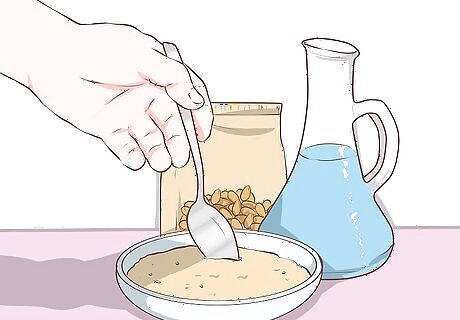
Make egg replacements. Flaxseed can be used to make vegan egg replacements for baking. Combine 1 tablespoon of flaxseed meal and 2.5-3 tablespoons water and allow it to sit for five minutes. This mixture can replace one egg in baking recipes. "Flax eggs" do not work equally well in all recipes, but it is good for fluffy baked goods such as pancakes, quick breads, brownies, muffins, and cookies. Flax eggs may produce slightly gummier or chewier baked goods.
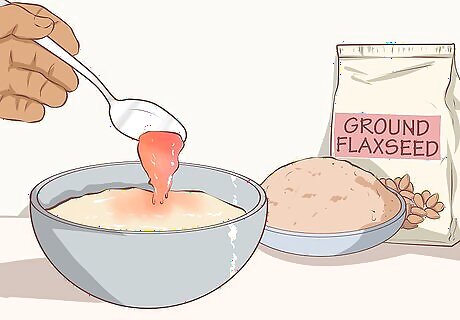
Add one or two spoonfuls into chili, spaghetti sauce, stew, or gravy. The deep toasty flavor of flaxseed goes well in rich stews and sauces.

Add flaxseed to commonly used condiments. Ground flaxseed blends well in mayonnaise, mustard and ketchup. Flaxseed also goes great in salad dressings and as a salad topping. You will not need to add very much (1 tablespoon or less will suffice).
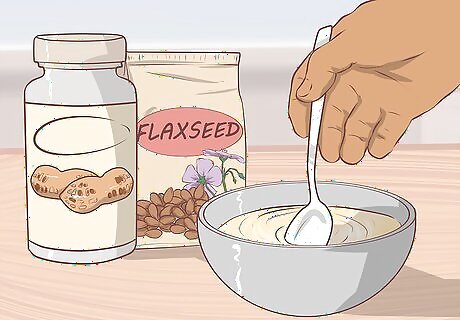
Make flax peanut butter cereal. Grind about 1/4 cup of flax seed in coffee grinder. Add 1/4 teaspoon ground cinnamon and two tablespoons peanut butter. Add hot water to the flaxseed/cinnamon/PB mixture and stir. This makes a nice warm cereal. You could also add 1/4 cup raw sunflower seeds and 1/4 cup raw sliced almonds, each ground separately, to the flax seed mixture, and increase the cinnamon to about 1/2 teaspoon.
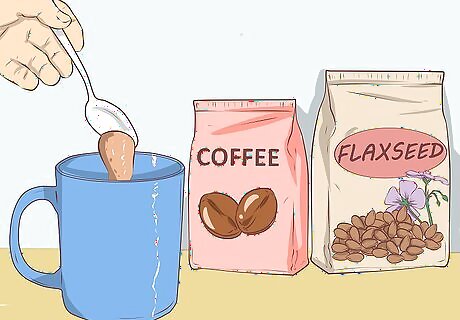
Add to drinks. Using smaller amounts throughout the day in whatever you are drinking will give just as much, without the thickness from one larger dose. Mix a little into coffee. Stir well, and put in a travel mug for people who don't want to see the flax floating in it and they won't notice. Stir a little into juice and drink up.
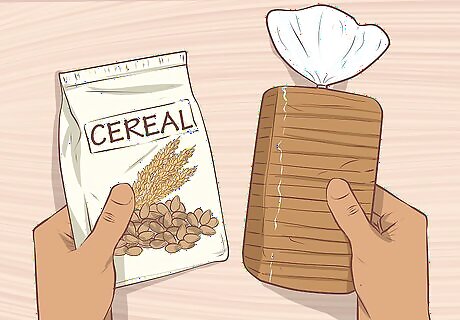
Purchase items made with flaxseed. Many ready to eat foods can be found with flaxseed already added. These foods include cereal, cereal bars, muffins and breads. There can be some drawbacks to this method of adding flaxseed to your diet. These drawbacks are you do not know how much flaxseed you are actually getting and many processed foods have lots of added sugar and sodium. If you do purchase items made with flaxseed it is helpful to read the label; the higher an item is in the ingredient list, the more of that ingredient in the food.




















Comments
0 comment